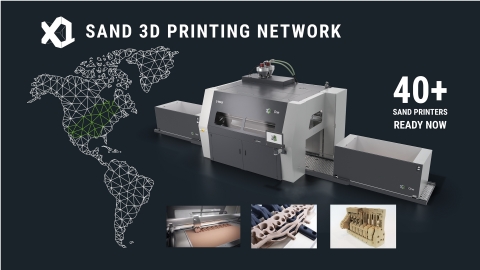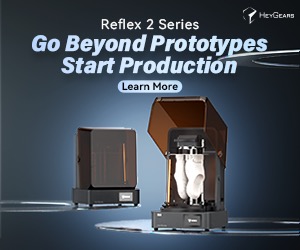ExOne is a pioneer in sand 3D printing, licensed since 1996 to continue developing industrial inkjet 3D printing originally created by engineers at Massachusetts Institute of Technology (MIT) for use with a variety of materials, to include sand and ceramic. Over decades, the North Huntingdon, Pennsylvania-headquartered company has evolved into one of the undisputed leaders in binder jet 3D printing technology.
With the inception of its 3D Sand Printing Network, ExOne is solidifying its position further, along with providing greater accessibility for its customers in North America. With 40 binder jet 3D printers owned mainly by pattern shops and foundries within the US, Canada, and Mexico, S-Max and S-Print systems are available for efficient production of molds and cores (usually finished within three to five days).
Sand 3D printing—and especially on the large scale—serves as a powerful and versatile industrial tool for critical applications like automotive, aerospace, and agriculture. Particles of sand are bound together by glue, resulting in a fabricated structure—whether it is a prototype, functional part, or a mold meant for creating other items. Cores can be created in one piece, saving time, money, and eliminating the need for assembly later, as well as clean-up.
This type of technology may not be as visible in the additive manufacturing mainstream, but behind the scenes, for many companies, it is the key to the production of metal casted molds and cores which are then used to make other parts. Industrial users have the ability to create new designs not otherwise possible, along with producing quality, high-performing molds that can also be created on-demand—eliminating the necessity for storage.
“The new ExOne Sand 3D Printing network can help manufacturers easily locate an ExOne sand 3D printer that best meets their needs,” said John Hartner, ExOne CEO. “What’s more, our network can help ensure a steady supply of sand molds and cores for metal castings, especially during a crisis, as well as enable reshoring of key parts that may be difficult to ship during the ongoing COVID-19 pandemic.”
Sand 3D printers continue to expand services for companies still mainly engaged in conventional methods like CNC machining, and the technology continues to be the source of research focused on investigating the benefits, as well as improving metal molds.
[Source / Images: Business Wire]Subscribe to Our Email Newsletter
Stay up-to-date on all the latest news from the 3D printing industry and receive information and offers from third party vendors.
Print Services
Upload your 3D Models and get them printed quickly and efficiently.
You May Also Like
Cutting 2,048 Experiments Down to 12: How Lean Thinking Is Making 3D Printing Smarter
Experimenting in industrial 3D printing can quickly become intense. Every small change, such as a new material, a slightly higher temperature, or a different surface finish, adds one more variable...
From Hobby to Hustle: How the Prosumer 3D Printing Market Is Rewriting the Industry
When many hear 3D printing, they still think of hobbyists tinkering in garages, making figurines, models, or toys. But that image has changed. A new wave of users exists between...
DyeMansion Buys ASM in Smart Move Into Entry-Level Post-Processing
Post processing leader DyeMansion has bought ASM. ASM’s VX1 is a compact, entry-level vapor-smoothing system that could work on or next to your desk. The unit was designed to be...
Bayern Innovativ’s Next Generation Manufacturing 2025 Conference
On the 23rd and 24th, Bayern Innovativ organized the Next Gen Manufacturing conference. Taking place at the Science Congress Center in Munich, this conference covers Additive Manufacturing, AI, software toolchains,...






































